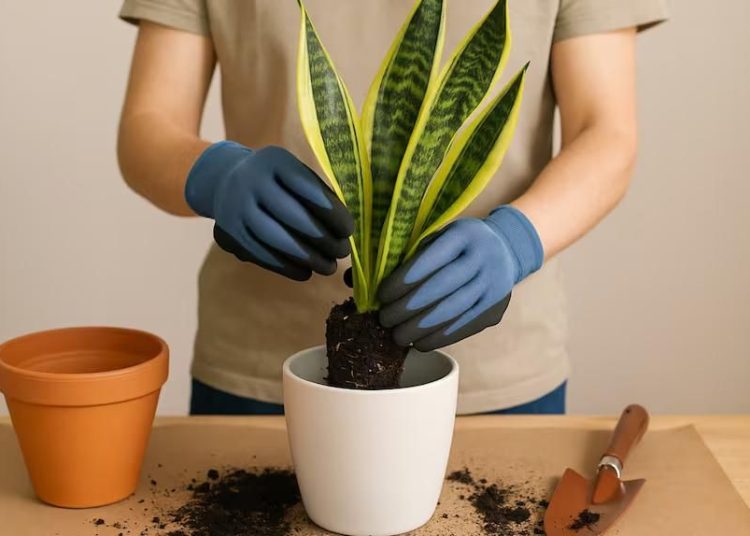Snake plants (Sansevieria), also known as mother-in-law’s tongue, are beloved for their striking, upright leaves and ability to thrive with minimal care. While they’re generally slow growers, there comes a time when your snake plant will need a new pot to stay healthy. Knowing when and how to repot is key to keeping it thriving for years.
Signs It’s Time to Repot a Snake Plant
Unlike many houseplants, snake plants don’t need frequent repotting. On average, they only need it every 2–3 years. However, you may need to repot sooner if you notice these signs:
1. Roots Outgrowing the Pot
If you see roots poking out from the drainage holes or circling the topsoil, your plant is root-bound and needs more space.
2. Soil Dries Too Quickly
When the soil dries out almost immediately after watering, it means the roots have taken up most of the pot’s space, leaving little room for soil to retain moisture.
3. Pot is Cracking or Bulging
Snake plant roots are surprisingly strong and can put pressure on pots, sometimes even causing clay or plastic pots to crack.
4. Plant is Top-Heavy
If your snake plant keeps tipping over or the leaves look crowded and cramped, it’s a sign the plant has outgrown its container.
5. Declining Growth or Yellowing Leaves
Stunted growth or yellowing leaves may indicate the roots don’t have enough room to absorb nutrients effectively.
Best Time of Year to Repot
The ideal time to repot a snake plant is spring or early summer. During this growing season, the plant can recover quickly from the stress of being transplanted. Avoid repotting in winter when the plant is dormant, as it may struggle to adapt.
Choosing the Right Pot and Soil
When repotting, select a pot that’s 1–2 inches larger in diameter than the current one. Too large a pot can lead to excess soil moisture, increasing the risk of root rot.
For soil, choose a well-draining mix, such as a cactus or succulent blend. You can also create your mix using equal parts potting soil, coarse sand, and perlite.
Tips for a Healthy Repot
Gently remove the plant from its current pot and loosen the roots.
Trim any damaged or rotting roots with clean scissors.
Place fresh soil at the bottom, position the plant, and fill in around the roots.
Water lightly after repotting, then let the soil dry out before the next watering.
Final Thoughts
Repotting your snake plant isn’t something you’ll do often, but paying attention to the signs ensures your plant continues to thrive. By choosing the right time, pot, and soil, you’ll help your snake plant stay strong, upright, and vibrant for many years.
















